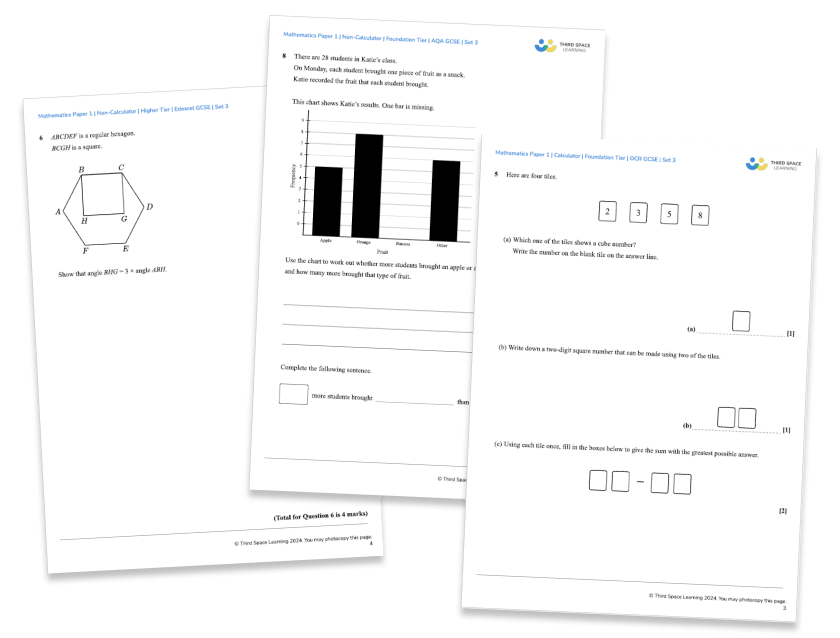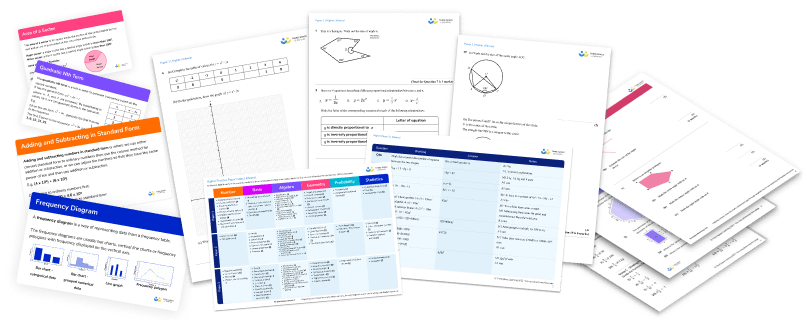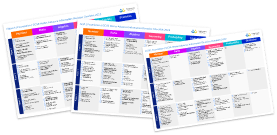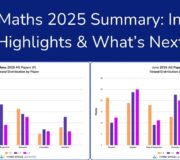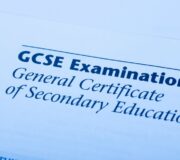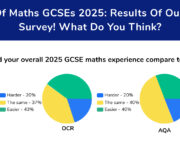GCSE Maths Paper 1 2022: Summary Of Topics, Questions & Planning For Paper 2
Originally published Tuesday 24th May 2022
GCSE exams are well underway, with GCSE maths Paper 1 taking place on Friday 20th May 2022 for students up and down the country.
We asked our expert consultant and contributor, Christine Norledge, to review Edexcel Paper 1 (non-calculator) and provide informed guesses for what will be on Paper 2 and Paper 3.
GCSE MATHS 2026: STAY UP TO DATE
Join our email list to stay up to date with the latest news, revision lists and resources for GCSE maths 2026. We’re analysing each paper during the course of the 2026 GCSEs in order to identify the key topic areas to focus on for your revision.
GCSE dates 2026
GCSE results (2026 when available)
Get ahead on revision with the GCSE maths papers analysis from 2025:
Analysis of GCSE Maths Paper 1 2025
Analysis of GCSE Maths Paper 2 2025
GCSE Maths Paper Analysis and Summary 2025
GCSE Maths Teacher Survey Results 2025
With adaptations, advance information and the fact that we’ve not had a June exam series since 2019, this year’s GCSE exams feel quite different. Usually, after Paper 1, I’d be sitting down with the paper to check off the topics we’ve had and provide students with a hit-list of areas to focus their revision for paper 2 and GCSE Maths paper 3.
See also: Summary of all GCSE maths papers 2022
This year, we’re in the unusual position of having a lot of that information already! We can now look in more detail at how the advance information relates to Paper 1, and use this to make deductions about the following two papers and how you might support your students in preparing for them.
This blog focuses on the Edexcel paper, rather than AQA, OCR or IGCSE. It’s also specifically about GCSE mathematics, rather than any A Level exams.
Be aware that the analysis and recommendations that follow are my own interpretation of GCSE maths Paper 1, and are not endorsed in any way by Edexcel. The question papers and mark schemes are yet to be formally released.
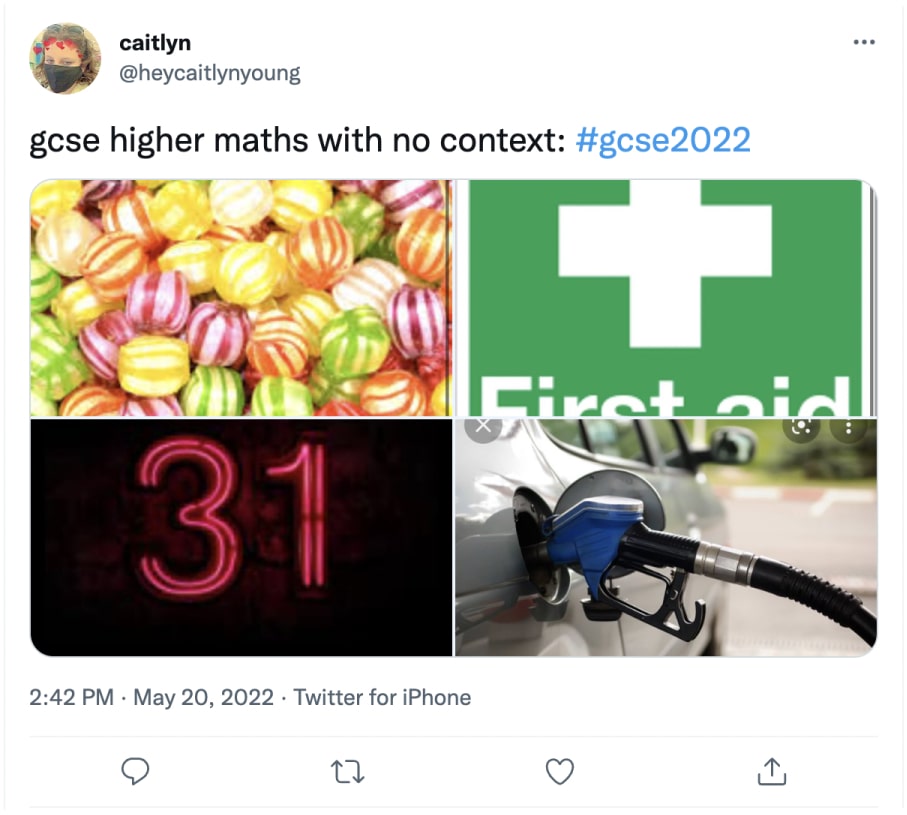
- Summary: Follow the advance information!
- Advanced information followed more faithfully than expected
- Edexcel Paper 1 Foundation was fair overall
- Crossover content presented itself in different ways
- Edexcel Paper 1 Higher was somewhat challenging
- Using the advance information to direct revision for Paper 2
- What should students be revising for Paper 2 Foundation?
- Paper 2 crossover topics to revise
- What should students be revising for Paper 2 Higher?
- The final hurdle: planning ahead for Paper 3
- Top tips for GCSE advance information revision
Summary: Follow the advance information!
If you’re short on time, the key takeaway from my analysis (and biggest surprise) was the extent to which the advance information matched up with the exam content.
Despite the fact that Edexcel’s Maths Emporium stated there could be a cross-skill assessment of topics not mentioned in the advance information, there doesn’t seem to be much evidence of this on Paper 1.
How to understand the charts and graphs that follow
I use the same complexity classifications from my 2017-19 series GCSE Foundation and Higher analysis blogs.
- C1 – standard procedural problems, often worth one or two marks;
- C2 – problems asking candidates to explain their reasoning, interpret information from tables, diagrams or other contexts, or ‘show that’ type questions;
- C3 – non-standard multi-step problems, often requiring the application of skills from a variety of topics, worth three, four, or more marks.
Read more:
- Question Level Analysis Of Edexcel Maths Past Papers (Foundation)
- Question Level Analysis Of Edexcel GCSE Maths Higher Past Papers
Topic strands were on par with previous Paper 1s
I briefly discuss the breakdown of GCSE maths questions by strand (Algebra, Number, …), and compare these to the previous summer series.
To summarise, the papers don’t feel significantly different to the 2017-2019 June Paper 1s, and slight variations in the percentage of marks for each strand seem to fit with variations in previous series.
Suggestions for Paper 2 to help with revision
Finally, I make some suggestions of things to practise with students in the run-up to GCSE Maths Paper 2 2022. I haven’t tried to ‘predict’ the contents of the papers, but I’ve offered a few suggestions on how some topics might be combined, based on what we’ve seen on Paper 1. Even if these suggestions aren’t accurate, they should provide an opportunity for your students to practise topics in combination with unfamiliar problems.
GCSE Maths Exams 2022 Advance Information Checklists
Want a resource that allows you to tick off 2022 advance information topics while linking to GCSE revision guides and worksheets to aid revision? Try our checklist covering the three main exam boards!
Download Free Now!Advanced information followed more faithfully than expected
In their guidance, all three exam boards stated that advance information would not apply to low-tariff or synoptic questions. Edexcel also specifically gave the guidance that students may need prior knowledge or skills that aren’t stated in the advance information and that students are still expected to apply knowledge to unfamiliar contexts.
I had expected that the paper would be a mix of:
- Advance information topics;
- Low-tariff procedural questions not included in the advance information;
- Multi-step questions that may require applications of content beyond advance information topics.
As far as Edexcel goes to date, this prediction appears to have been pretty wrong! On Paper 1, there was a prior warning via the advance information of every topic that ended up being tested, and there was no significant inclusion of any topic not mentioned in the advance information.
It will be interesting to see how all of this is reflected in GCSE grade boundaries come the summer.
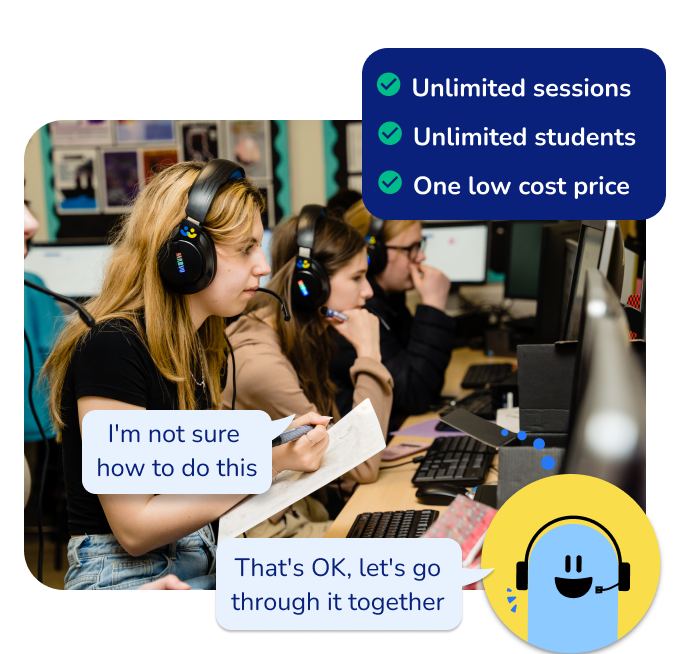
Unlimited GCSE maths tutoring with Skye, the voice-based AI maths tutor.
Built on the same principles, pedagogy and curriculum as our traditional tutoring but with more flexibility, reach and lower cost.
Help your GCSE students achieve their target grade with Skye’s one to one maths tutoring.
Watch Skye in actionPaper 2 and 3 will presumably honour advance information too
This is not to guarantee that it will be exactly the same picture for Papers 2 and 3. However, given how the advance information marries up to the paper content for both Foundation tier and Higher tier, I’d be surprised if Paper 2 and 3 do not follow the same pattern.
It’s also worth highlighting that, at Higher, in particular, one question might cover multiple parts of the advance information, such as embedding a quadratic equation in a different context. Due to the number of topics given by Edexcel in the advance information release, it would be impossible for each topic on the advance information list to be assessed individually.
Given how Paper 1 has turned out, we can now start to make a few more guesses about the content of Papers 2 and 3, and how some of these pieces of advance information may link up. We now turn our attention to Paper 1, before thinking ahead to the next papers.
Read more: GCSE Exams 2022 Advance Information For Maths
Edexcel Paper 1 Foundation was fair overall
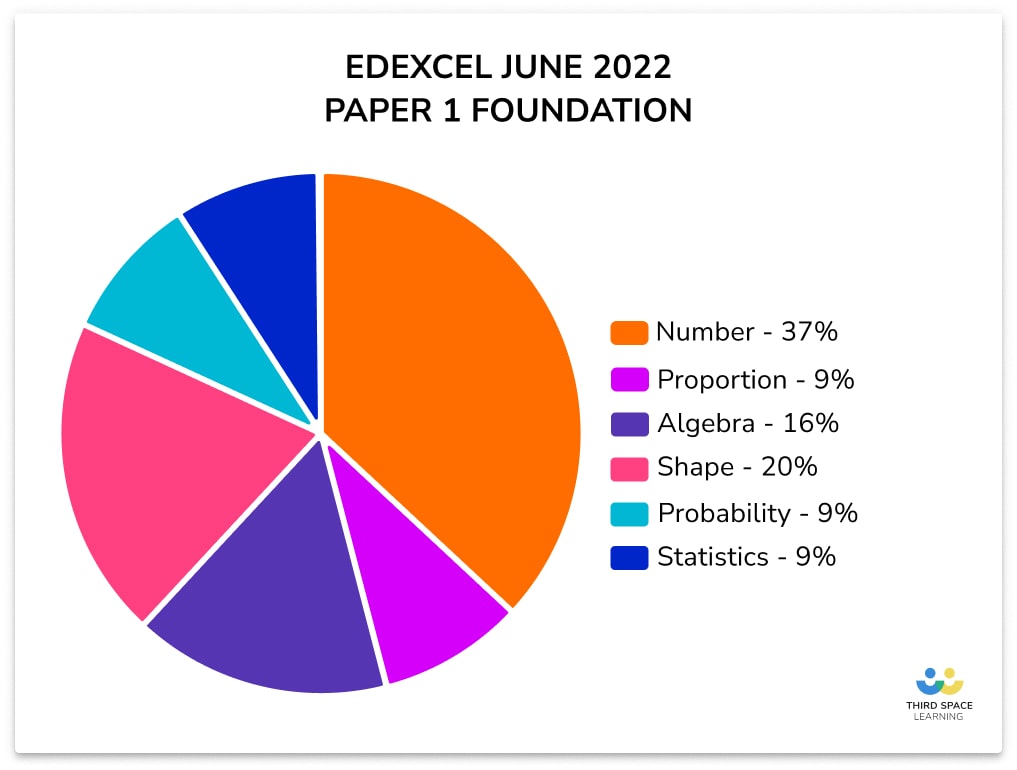
On balance, the Foundation paper felt like a fair paper for students who have had considerable disruption to their GCSE studies. Compared to some of the previous series, this particular paper had a slightly higher percentage of more procedural questions (C1), and a slightly lower percentage of non-standard multi-step problems (C3).
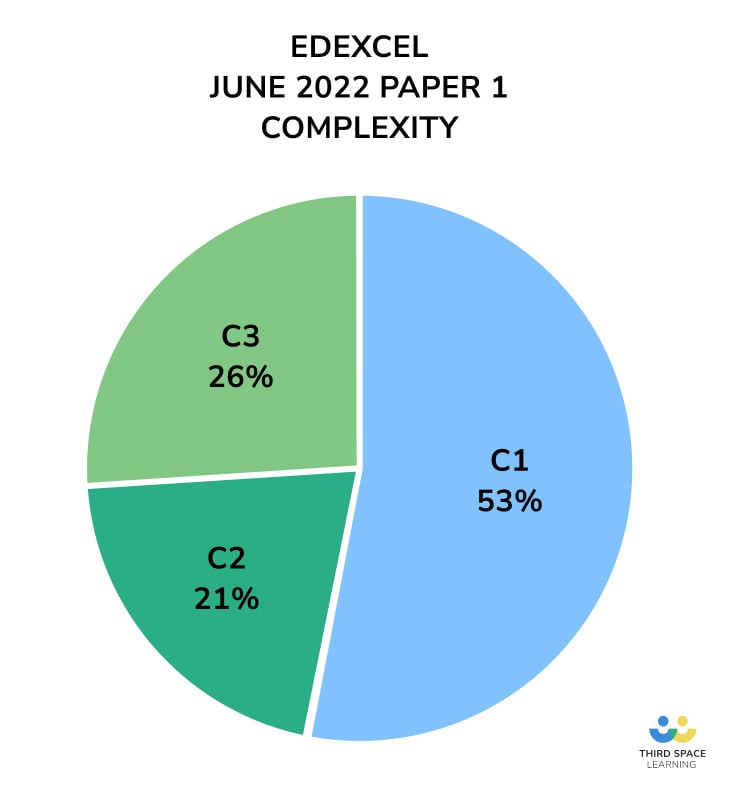
The paper didn’t really feel significantly different to previous series, and it didn’t feel like the adaptations had resulted in big changes to Foundation Paper 1 this year.
Advanced information married seamlessly to Foundation questions
When relating the advance information to Foundation Paper 1, we can almost marry up each bullet point with a question or part-question. A couple of broader-reaching topics were assessed more than once, such as fraction addition, which was tested procedurally and also within an unfamiliar context problem.
There were a few cases where multiple bullet points referred to the same question, such as one question which required the volume of a cube and another which required the quadratic graph.
There were also a couple of unexpected combinations of specification bullet points, such as one question which required a plan and elevation, but these combinations didn’t ‘hide’ topics within other topics, so should remain fairly accessible to students.
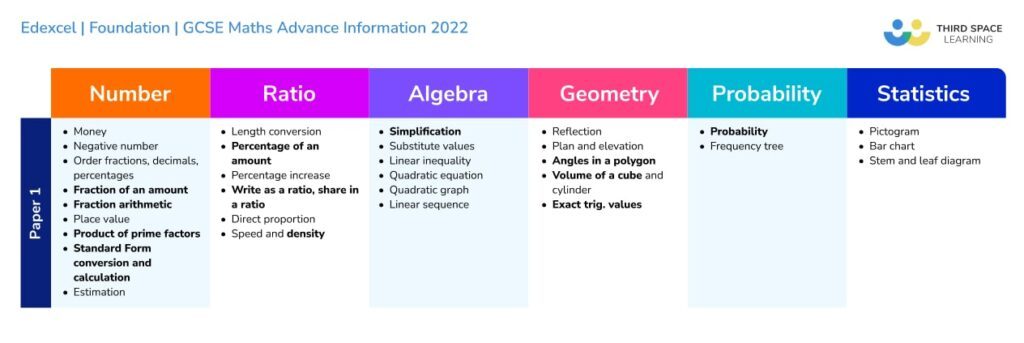
Number dominated the topic strands for Foundation as expected
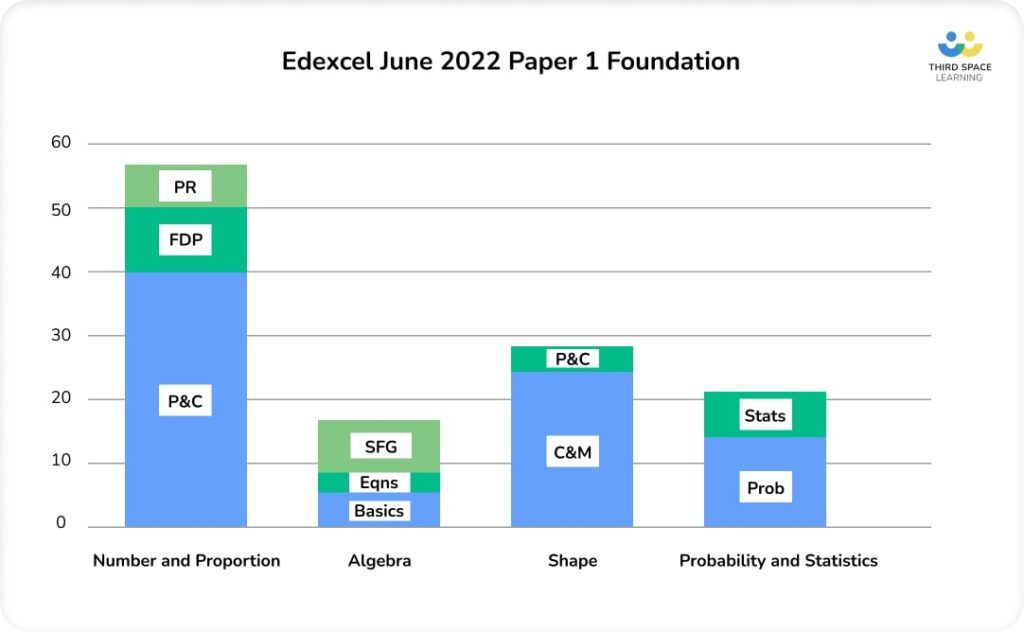
As expected with the non-calculator paper, there was plenty of work on Number, particularly Properties and Calculations. This was a slightly higher percentage than on previous Foundation Paper 1s.
Lots of the Calculation and Measures marks in Shape were accounted for by Units, Measurements and Drawing, including length conversion and the compound measures questions involving speed and density.
In comparison with June 2019, there was a higher proportion of Algebra and Statistics on this paper, but this is not a significant proportion when compared to all previous June Paper 1s.
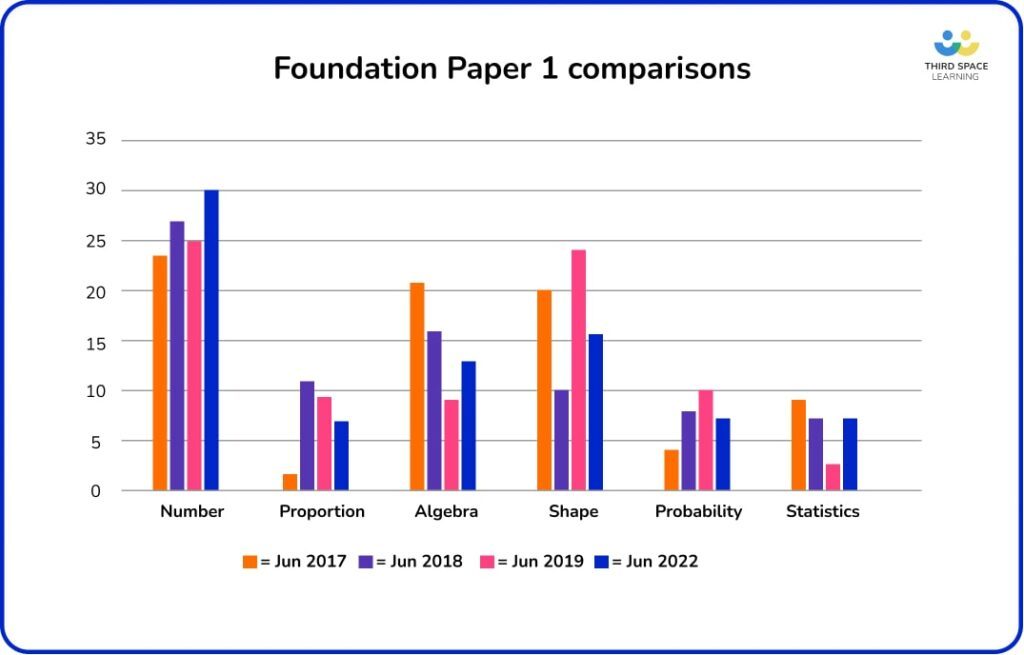
Formula sheet was mostly redundant for Foundation
Anecdotally, students have not found the formula sheet particularly useful for the first Foundation paper. Students could potentially have referred to it for circle formulae when tackling the volume of a cylinder problem, but it is not applicable to much else on the paper.
Crossover content presented itself in different ways
In my original Edexcel Foundation topics blog (linked above), I suggested that a topic appearing on both lists is not a guarantee that it will be assessed in the crossover section, due to some topics (e.g. simplification) being broad-reaching and requiring assessment in different ways on each tier.
I also thought it was likely that some topics in both lists (i.e. standard form calculations) must be in the crossover content.
This statement appears true – however, it seems that we need to be careful in over-interpreting this to try and predict the crossover for Papers 2 and 3.
For example, exact trigonometric values appeared on the list for both Foundation and Higher. As this is typically a ‘Grade 5’ topic, I suspected that we’d see ‘state the value of sin/cos x’ on both Foundation and Higher. However, the exact trigonometric value on Higher was embedded within another question, causing some students to miss this entirely.
Edexcel Paper 1 Higher was somewhat challenging

In comparison with the Foundation tier paper, it doesn’t appear at first glance that Higher tier students have been given an easy ride. There were a couple of really tricky questions applying multiple topics, and the level of challenge on some of the ‘higher grade’ topics was significant.
That said, when applying my complexity measure, the paper looks broadly similar to the previous June Higher series, with the paper mostly split between procedural (C1) and multi-step (C3).
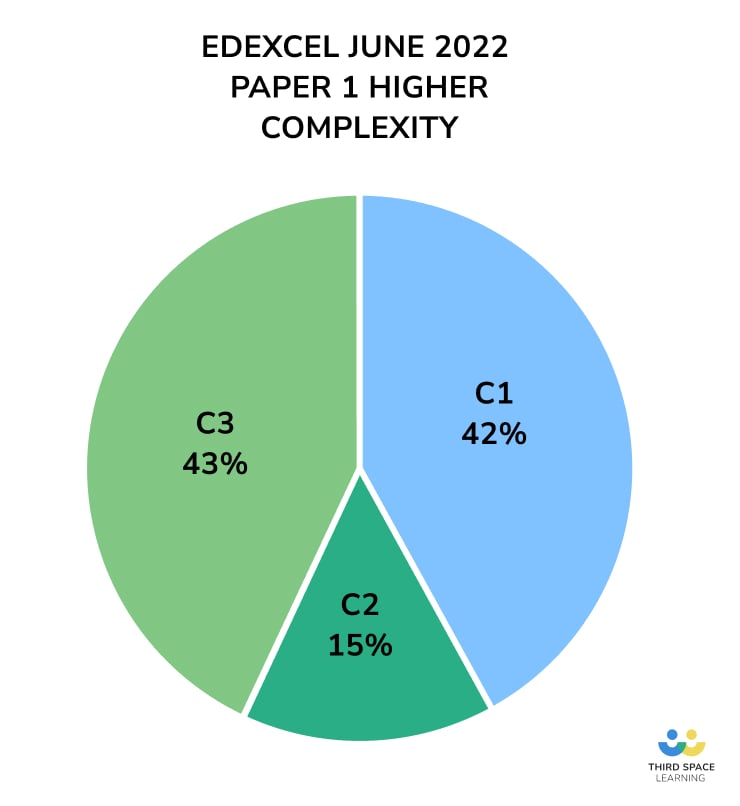
We also need to remember that half of the Higher paper is aimed at students with a target of Grade 7 or higher (approximately 20% of the cohort). So, a good Higher paper should be challenging for most students, and those aiming for a grade 5 or 6 should not expect to be able to answer every question on the paper.
It’s important to be mindful of the effects of advance information content. There has been significant discussion around the perceived difficulty of the final question on the paper about overlapping circles. However, the information provided in the advance information should have hopefully provided a clue for some students about how to begin this problem.
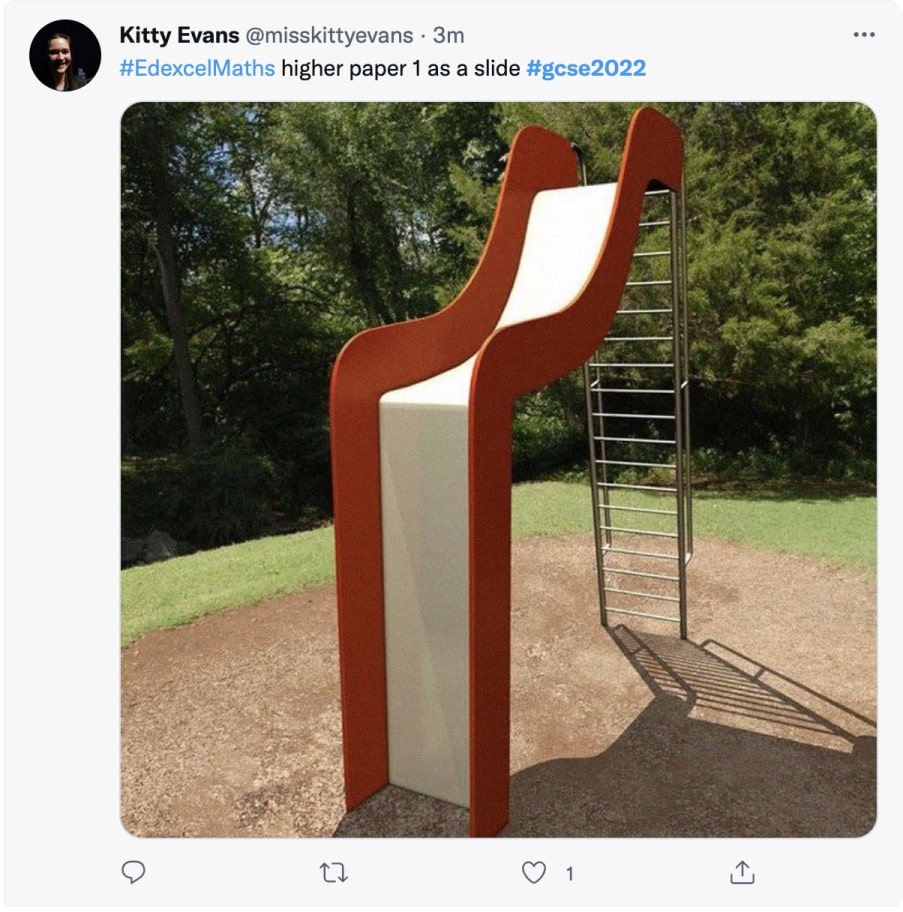
Looking to help your pupils strengthen their fluency in maths? Why not try Third Space Learning’s free, daily and quick mental maths resource, Fluent in Five! Already used by thousands of primary schools, we’ve now got a growing library for secondary schools too.
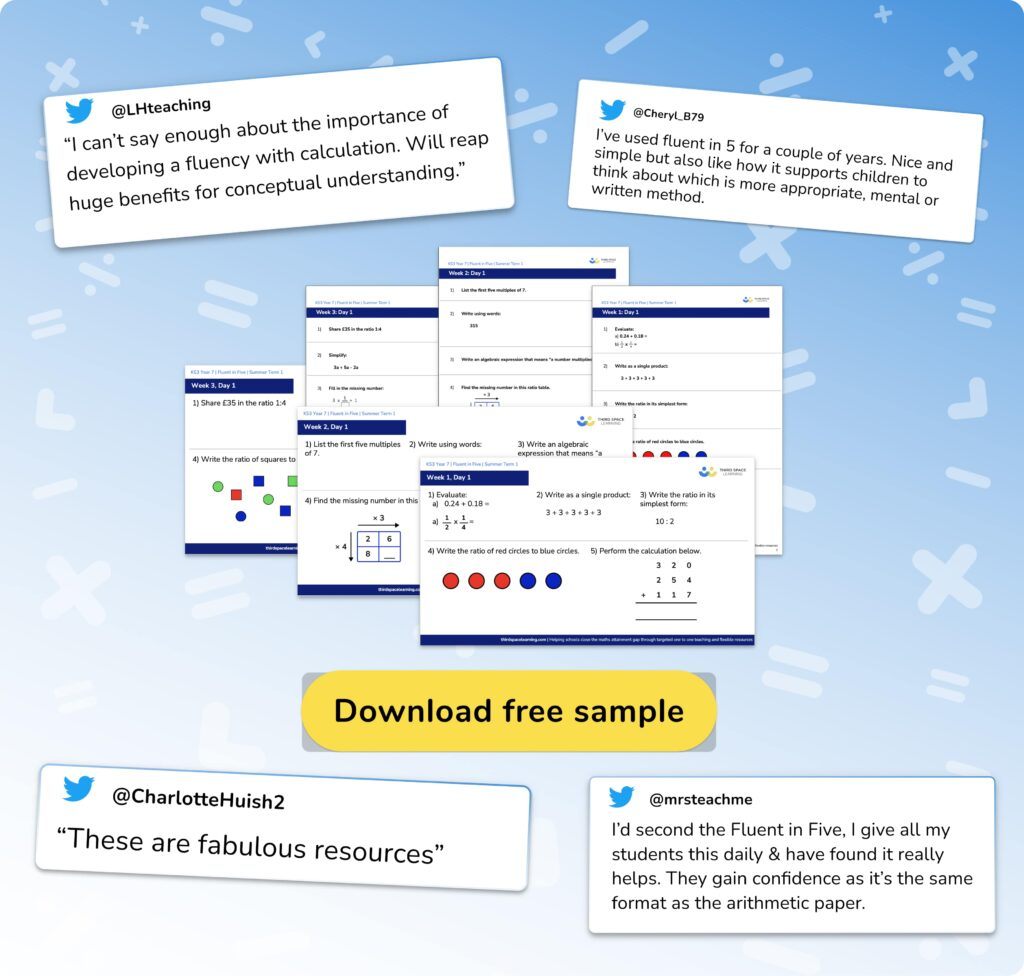
Much more overlap for Higher advance information
Compared to Foundation, there were a significantly higher number of cases where multiple bullet points referred to the same question.
We have examples from the crossover content, and others, such as gradients of parallel and perpendicular lines required to calculate the equation of a tangent. The speed-time graph and gradient of a curve bullets referred to the same question.
There were also cases where a bulleted topic appeared more than once. For example, there were multiple questions which required quadratic equations.
The final theme to address with Higher students is the issue of some bullet-pointed topics being ‘embedded’ or hidden in questions.
As previously discussed, some students were thrown by the fact that there didn’t appear to be an exact trigonometric values question on the Higher paper, and some may also have missed the almost incidental surd simplification.
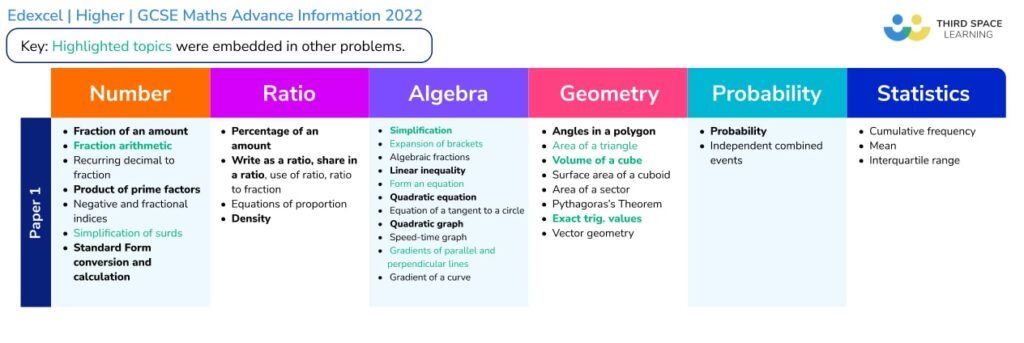
Topic strands unsurprisingly more evenly distributed for Higher
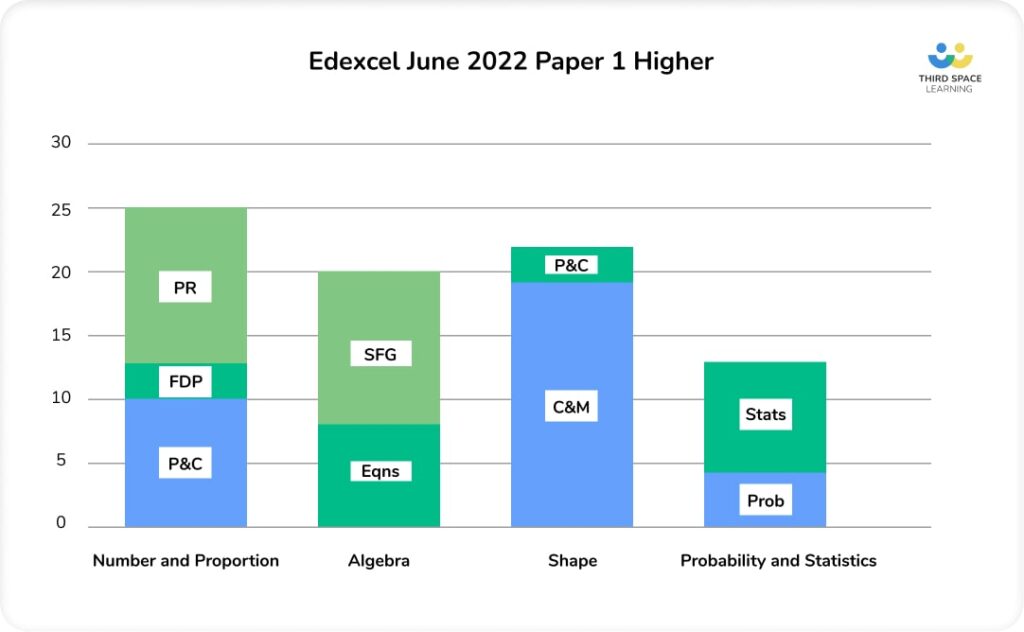
There were no significant surprises or differences in the topic distribution across Higher Paper 1.
Compared to the previous two June papers, there were a few more marks available for Shape work, which was almost exclusively Calculations and Measures. This included the area of sector/segment question and the density and volume question. There was also more Statistics than in June 2018-19.
Interestingly, the topic distributions are most similar to June 2017, which was the first paper on the new specification and generally described as extremely challenging, compared to the old spec. The papers were subsequently tweaked in 2018 to make them easier to access.
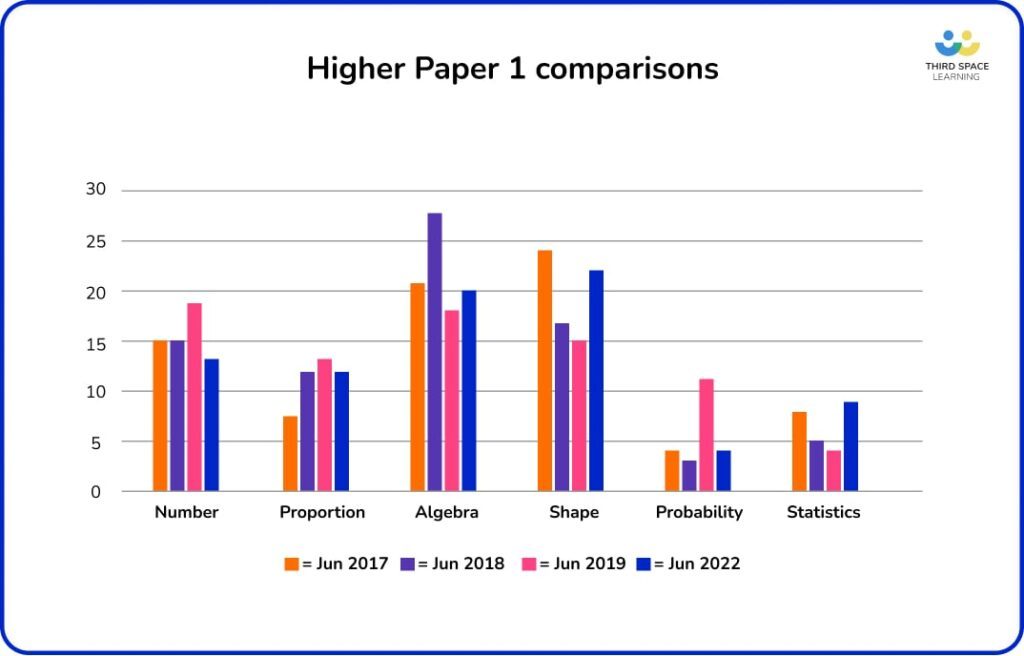
Formula sheet also not particularly useful for Higher
Again, students have anecdotally not found the formula sheet useful in this exam. It is possible that a couple of the geometry formulae may have been useful for students. However, as these both appeared in non-standard multi-step problems, it is likely that students may have not even spotted that they needed to use these formulae.
Using the advance information to direct revision for Paper 2
Now we’ve got more of an idea about how the advance information applies to the exam papers, we can use this information to help students further direct their revision.
We must remember that the exam boards initially cautioned that the advance information should not be considered as a list of what was on the exam. Even though that appears to be exactly what we have for Edexcel Paper 1, we can’t necessarily assume this will apply for Paper 2 or 3.
However, it is reasonable to assume that, if there are any deviations, they will be very few, and we should be using the advance information lists as a guide for revision topics on Papers 2 and 3. I’d also say that students should only be revising topics from outside these lists if they are fully confident they have mastered the listed content.
Same topic, different paper
It’s important to be aware that Edexcel have previously examined the same topic on multiple papers, but it’s equally important to remember that they’ve generally assessed in different ways each time they’ve done this.
For example, we’ve got linear sequences on both Paper 1 and Paper 3 Foundation. As we’ve had a simple pattern-based question on Paper 1, I’d expect Paper 3 to be more challenging, perhaps finding the nth term.
Different topics, same question
In the sections below, I’ve re-examined the lists for Paper 2 Foundation and Higher and tried to piece together topics that may appear in the same question.
Although we can’t guarantee that this will be how each paper will look, revising topics in various combinations will also help students to apply their skills to unfamiliar contexts in the next two exams, even if they do not appear in the ways I’ve listed below.
What should students be revising for Paper 2 Foundation?
This is not an exhaustive list, but I’d focus on:
- Ordering integers, including lists with positive and negative numbers
- Writing the correct inequality symbol between a pair of numbers
- Ordering a list of 3-4 fractions by writing with the common denominator
- Naming polygons and naming/drawing parts of a circle
- Reading information from a scale drawing (i.e. height comparisons)
- Writing scales as ratios, working with map scales
- Problem-solving using angle facts, particularly combinations of angles in a triangle, vertically opposite angles, parallel and perpendicular*
- Context-based multiples problems, such as bus timetables
- Number machines
- Averages, including from a frequency table
- Tree diagrams, including finding probabilities and combining using and +
- Solving worded problems using two-way tables
* Note that ‘parallel and perpendicular lines’ is mentioned on Paper 2, and ‘angle properties of parallel lines’ is mentioned on Paper 3. This may mean that the Paper 2 assessment of parallel and perpendicular lines is just recognising or labelling them.
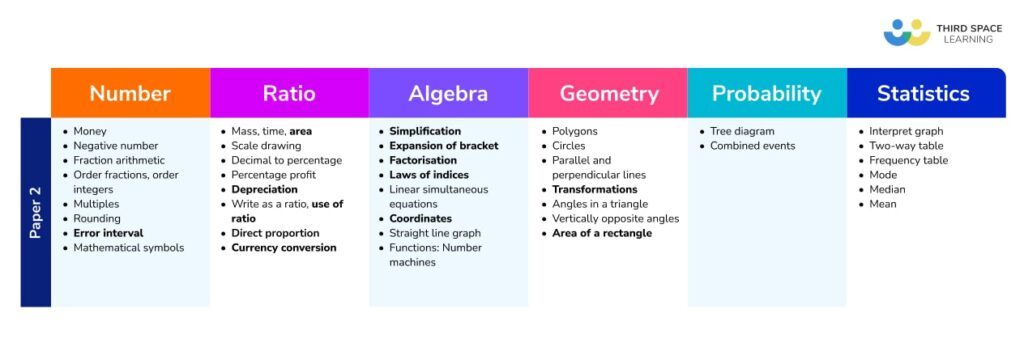
Suggested GCSE maths past paper questions for Paper 2 Foundation
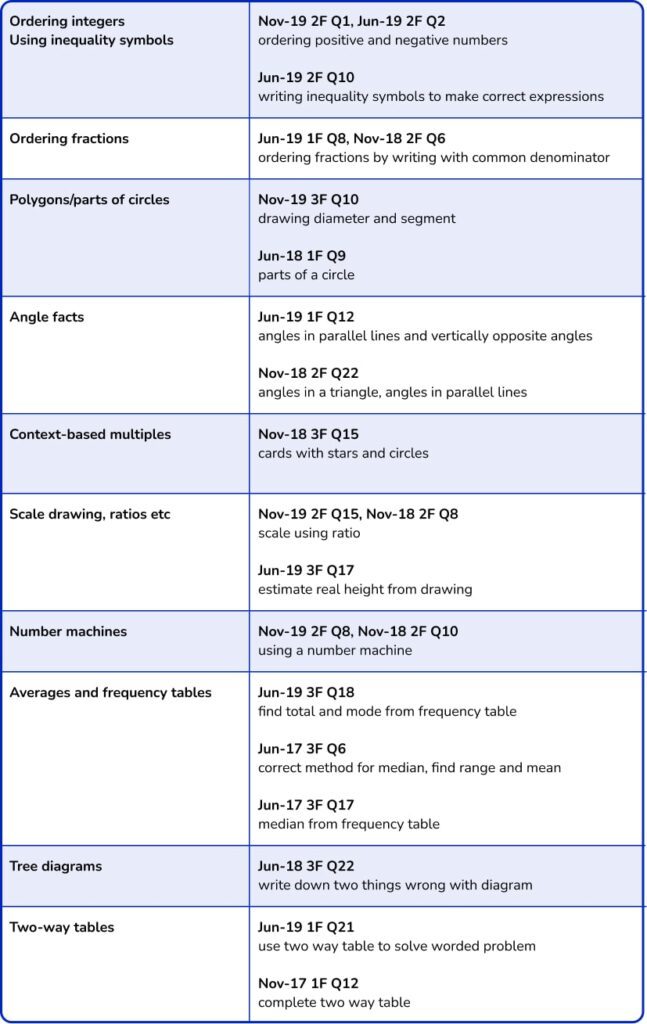
Paper 2 crossover topics to revise
As I’ve mentioned before, not every topic that appears in both Foundation and Higher lists will be crossover content.
However, I have picked out a few ideas to work on with students, with the rationale that, at this stage, any practice on key topics will help, even if the topics don’t appear quite as I’ve listed them.
- Coordinates problem-solving
- Transformations – revise them all, but particularly describing a rotation or enlargement
- Expanding bracket(s)* and factorising
- Laws of indices (integer powers)
- Using or plotting a currency conversion graph
- Repeated percentage decrease/depreciation
- Comparing areas using ratio notation, finding the ratio of one area to another
- Area unit conversions
- Error intervals
* There’s a slight curiosity here with the Higher advance information for Paper 3, which mentions expansion of bracket and expansion of brackets. Presumably, this means there will be a single bracket in the crossover content, with a set of double or triple brackets in the Higher only content. Paper 2 mentions ‘expansion of bracket’ in the singular, so we may not see double bracket expansion on Foundation at all this year.
Suggested past paper questions for Paper 2 crossover content
In some cases, such as percentage depreciation and area unit conversions, there aren’t exact matches in current exam papers. For these, I’ve given the closest I could find.
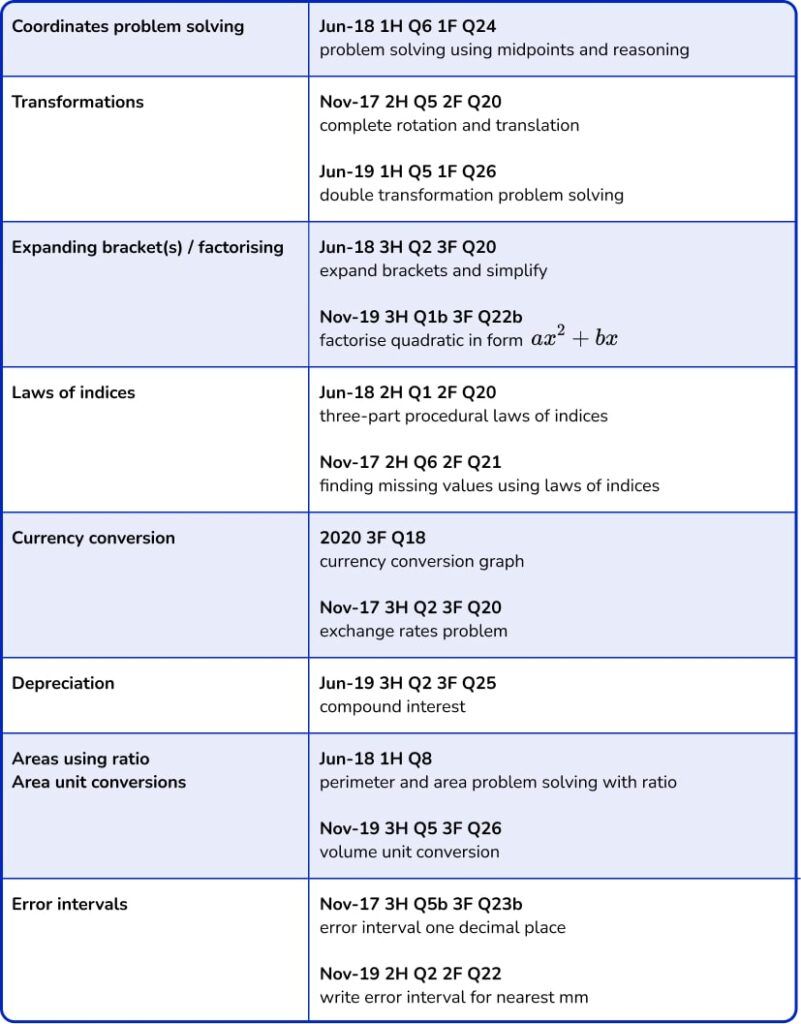
What should students be revising for Paper 2 Higher?
This is not an exhaustive list, but I’d focus on:
- Proportion work without equations i.e. contexts, graphical
- Inverse proportion worded problems
- Pressure as stand-alone, relating to inverse proportion or combined with the volume of a composite solid
- Drawing Venn diagrams from worded information and use of probability formulae
- Inverse and composite functions (part a/b questions using both) – this could also include forming an equation
- Transforming graphs (reflect/translate only) including transforming trig. graphs
- Forming and solving linear equations from contexts
- Quadratic inequalities – stand-alone and from contexts (i.e. shape problems)
- Box plots – draw/complete a box plot, work with quartiles, compare distributions
- Capture-recapture – note this has not (as far as I’m aware!) been assessed on a GCSE paper yet
- Sine and cosine rules, particularly combinations
- Circle theorems
- Equations of parallel lines
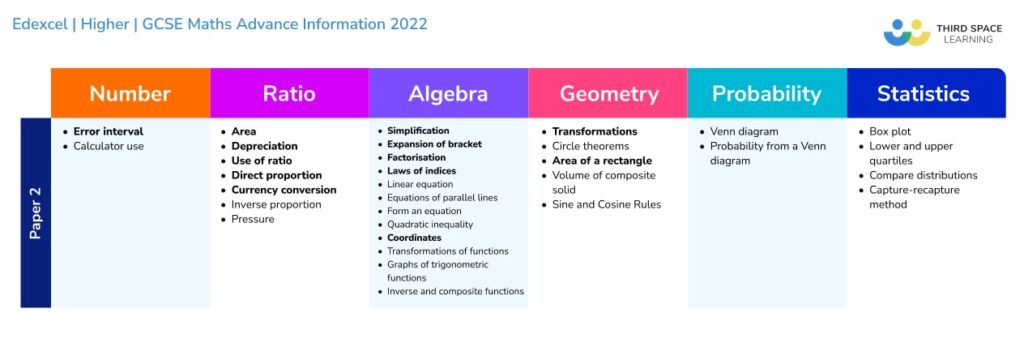
Suggested past paper questions for Paper 2 Higher
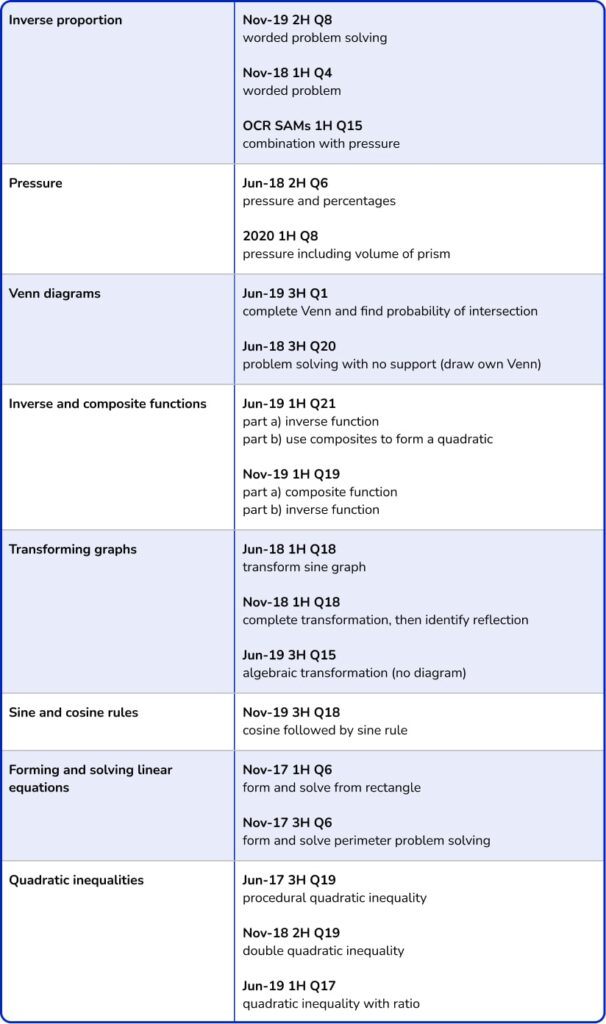
The final hurdle: planning ahead for Paper 3
Once Paper 2 is available, it’s likely that we’ll be able to refine ideas about how Paper 3 will look. However, due to the relatively short time between the Paper 2 (7th June) and Paper 3 (13th June) exams, here is a quick summary of the things I’d be directing students towards over their half-term break.
What should students be revising for Paper 3 Foundation?
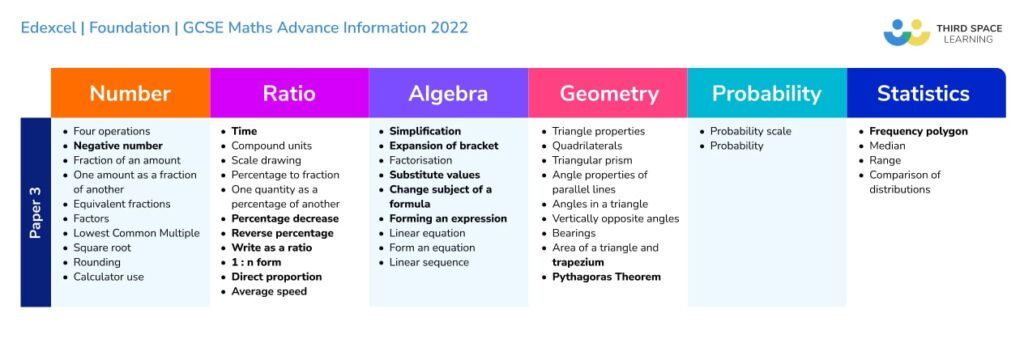
Comparing the Paper 3 list to the Paper 1 list for Foundation, there’s considerably more detail provided (45 bullets to be exact). Many of these will have to combine in order to form questions.
For now, my hit list is probably:
- Problem-solving with fractions, possibly including a percentage to convert
- Finding LCM (procedural)
- Using a calculator including square root symbol, rounding answer
- Converting compound units, possibly speed
- Factorising a simple expression
- Forming a linear equation from a context and solving (simple as not crossover), possibly involving the area of a triangle
- nth term of a linear sequence, or justifying if a term is in a sequence
- Angle properties problem solving (as Paper 2) – could include an equilateral or isosceles triangle due to the mention of triangle properties
- Bearings, possibly linked to scale drawing
- Find median and range, and compare distributions
- Simple probability using scale
Paper 3 crossover topics to revise
Note that everything in bold (i.e. appears on both lists) might not necessarily be crossover content.
I’d be thinking about:
- A two-part percentage problem, with a decrease and a reverse percentage
- Ratio problem involving 1:n form
- Pythagoras’ theorem – could involve the area of a trapezium
- Changing the subject of a formula
- Frequency polygons
It’s possible we’ll also have a direct proportion question appear in the crossover content. However, we might be able to tell more about what sort of question that may be once we’ve seen direct proportion on Paper 2 (remember, it’s on all three Foundation tier papers, and on two Higher tier papers!).
What should students be revising for Paper 3 Higher?
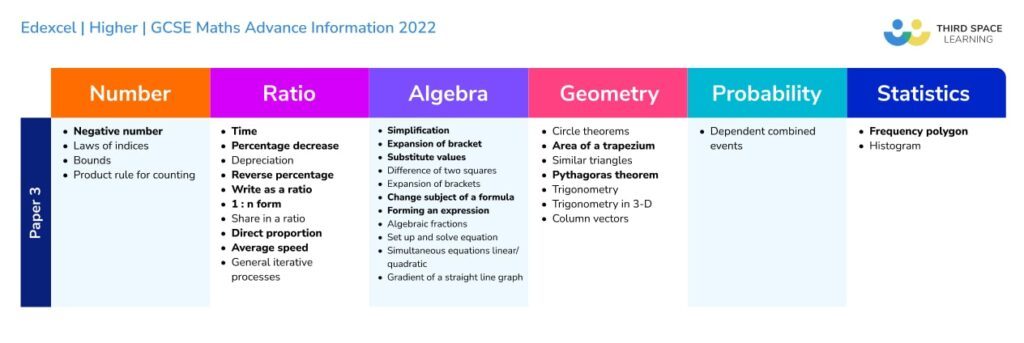
Again, we’ve got a lot of bullet points for Paper 3, especially in Algebra, so we’ll have a good few combinations of topics.
For now, I’d consider:
- General iterative processes, referring to population growth/decay (see Nov-19 2H Q22) and could be linked to the depreciation mentioned
- Algebraic fractions, possibly including the difference of two squares
- Expanding double/triple brackets
- Something similar to Jun-18 3H Q19, which includes trigonometry, similar triangles, algebraic fractions, setting up and solving a quadratic, and expanding brackets – so this is good practice for lots of advance information skills anyway!
- Standard right-angled trigonometry where the angles are given in a ratio (share in a ratio), such as Nov-18 3H Q6
- Trigonometry in 3D where angles are given in a ratio (Jun-19 2H Q19)
- Dependent combined events including the use of probability formula given on formula sheet
- Histograms, bounds, product rule and column vectors, probably as stand-alone questions
Top tips for GCSE advance information revision
- Prioritise revision for the content mentioned in the advance information.
- Use the advance information as a clue if you’re not sure how to start a question – think about what topics you haven’t seen yet.
- Don’t expect that there will be one question on each topic. Look for combinations of topics within questions.
- Work through past paper questions related to the advance information topics – there are some suggestions above.
- If you haven’t already done so, download and work through Third Space Learning’s GCSE revision resources, including free worksheets.
To all GCSE students, whether you’re sitting Edexcel, AQA GCSE maths, OCR or IGCSE maths, best of luck on the next GCSE paper!
DO YOU HAVE STUDENTS WHO NEED MORE SUPPORT IN MATHS?
Skye – our AI maths tutor built by teachers – gives students personalised one-to-one lessons that address learning gaps and build confidence.
Since 2013 we’ve taught over 2 million hours of maths lessons to more than 170,000 students to help them become fluent, able mathematicians.
Explore our AI maths tutoring or find out how our GCSE maths tutoring programmes could support students in your school.
